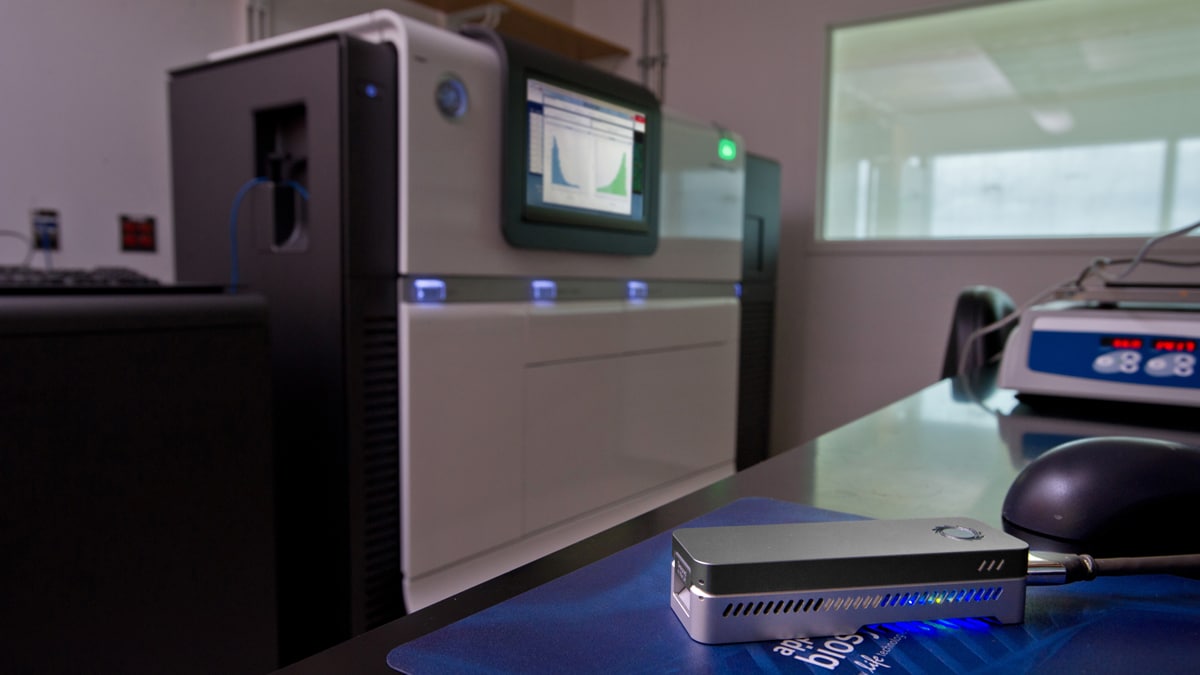What to know
CDC is expanding the use of new genomic sequencing technologies for public health. These technologies can help identify and track pathogens faster, stop outbreaks sooner, and keep our nation safe from infectious disease threats. CDC's AMD program is keeping pace to address ever-evolving pathogens and better protect the American people.

Developing sophisticated, culture-independent diagnostic tests
Culture-independent diagnostic tests (CIDTs) rapidly identify pathogens without the need to culture (grow) them first. That speed yields a faster diagnosis.
However, CIDTs also pose a problem for public health investigators. It is not enough to know which bacterium made someone sick. It is also necessary to know the specific bacterial strain involved and whether it is resistant to antibiotics. Currently, CIDTs do not provide this kind of detailed information.
For instance, the PulseNet foodborne disease surveillance system relies on isolates, which are bacterial strains isolated from clinical samples necessary to detect outbreaks. Public health laboratories need isolates to determine the bacterium's DNA fingerprint. They share that DNA fingerprint with CDC and other disease investigators. However, current CIDTs do not provide isolates.
Fortunately, CDC is using AMD technologies to develop sophisticated tools that can identify and extract disease-causing bacterial DNA from stool samples. Then the tools will make it possible to identify specific features of a bacterium and link it to a source. That information will help identify which antibiotics are likely to work against it, without an isolate.
Adapting nanopore technologies
Next-generation sequencing (NGS) technologies have revolutionized the diagnosis of human diseases. They are critical frontline tools in public health laboratories.
NGS helps scientists rapidly analyze the DNA of known, unknown, and emerging pathogens. This technology can be costly, complex, and confined to the laboratory where temperature and humidity are constant. However, nanopore sequencing technologies provide portable, flexible, and inexpensive alternatives to NGS. These tiny sequencers weigh less than a deck of cards and remain stable even in harsh environmental conditions.
They can operate on available laptop computer or smartphone platforms. Their size and convenience make them ideal for investigations at the site of infectious disease outbreaks. This is especially useful in remote areas with limited resources.
These sequencers can also provide faster results than current NGS technologies. CDC scientists have used the devices to sequence pathogens in field locations during outbreaks of Ebola, Middle East respiratory syndrome (MERS), rabies, influenza, monkeypox, and other viruses. With portable technology available at the site of an outbreak, it's possible to more quickly identify and track dangerous viruses to its source and contain the spread.

Using the cloud to share data in real time
In the early days, CDC laboratories received clinical samples in the mail. Later, laboratory and epidemiologic data were be sent over computer networks with incredibly slow data speeds.
Through the AMD program, CDC is modernizing its computing capacity to take advantage of secure cloud computing services. These efforts make it faster and easier to collaborate with state and local health departments and partner organizations.
With CDC’s cloud computing capacity and scalability CDC programs and partners can share, analyze, and compare their genomic data in near real time.
CDC developed this capacity with public health laboratories involved in influenza surveillance. That data transmission was instrumental to speed up the ability to track circulating influenza virus strains. As CDC improves its computing capacity, the agency’s laboratories will provide similar services for other pathogens.
Learn more: Culture-independent diagnostic tests
- Portable Rabies Virus Sequencing in Canine Rabies Endemic Countries Using the Oxford Nanopore MinION. Viruses. 2020 Nov 4;12(11):1.
- Portable Rabies Virus Sequencing in Canine Rabies Endemic Countries Using the Oxford Nanopore MinION. Viruses. 2020 Nov 4;12(11):1.
- Clinical Presentation and Serologic Response during a Rabies Epizootic in Captive Common Vampire Bats (Desmodus rotundus). Trop. Med. Infect. Dis. 2020, 5, 34.
- Monkeypox in a Traveler Returning from Nigeria - Dallas, Texas, July 2021.MMWR Morb Mortal Wkly Rep. 2022 Apr 8;71(14):509-516.
- Divergent Rabies Virus Variant of Probable Bat Origin in 2 Gray Foxes, New Mexico, USA.Emerg Infect Dis. 2022 Jun;28(6):1137-1145.
- Monkeypox Outbreak - Nine States, May 2022.MMWR Morb Mortal Wkly Rep. 2022 Jun 10;71(23):764-769.
- Detection of Apparent Early Rabies Infection by LN34 Pan-Lyssavirus Real-Time RT-PCR Assay in Pennsylvania.Viruses. 2022 Aug 23;14(9):1845.
- Elimination of human rabies in Goa, India through an integrated One Health approach. Nat Commun 13, 2788 (2022).
- Multiple lineages of monkeypox virus detected in the United States, 2021-2022.Science. 2022 Nov ; 378(6619):560-565.
- Genomic deletions and rearrangements in monkeypox virus from the 2022 outbreak, USA BioRxiv 2022.09.16.508251.
